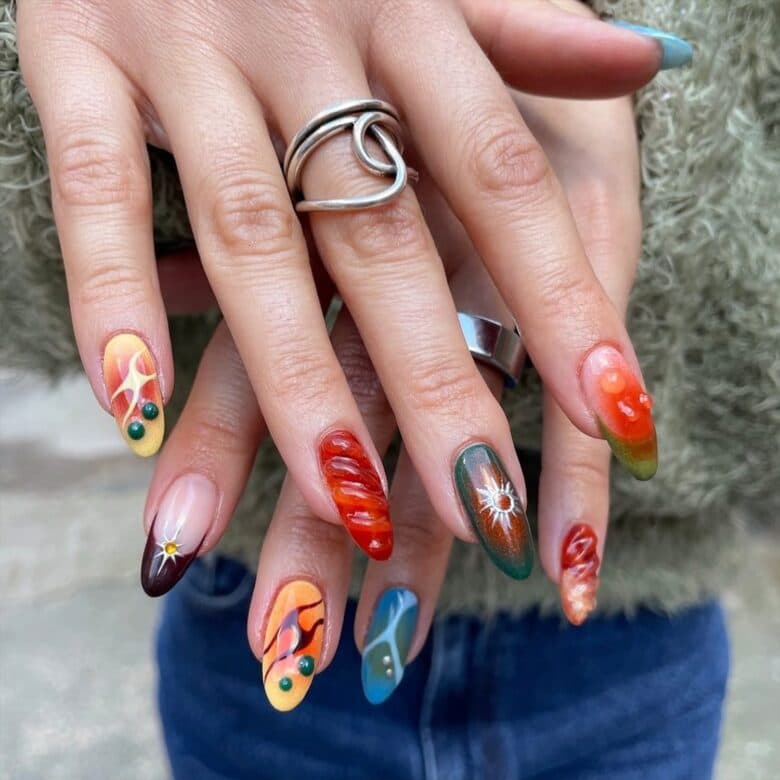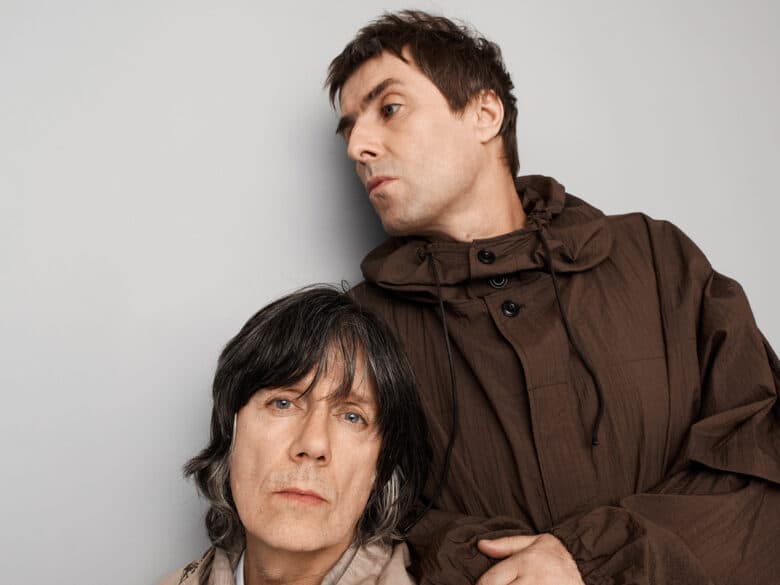The Cameron Twins are creating playfully sinister art inspired by childhood memories and discarded dolls
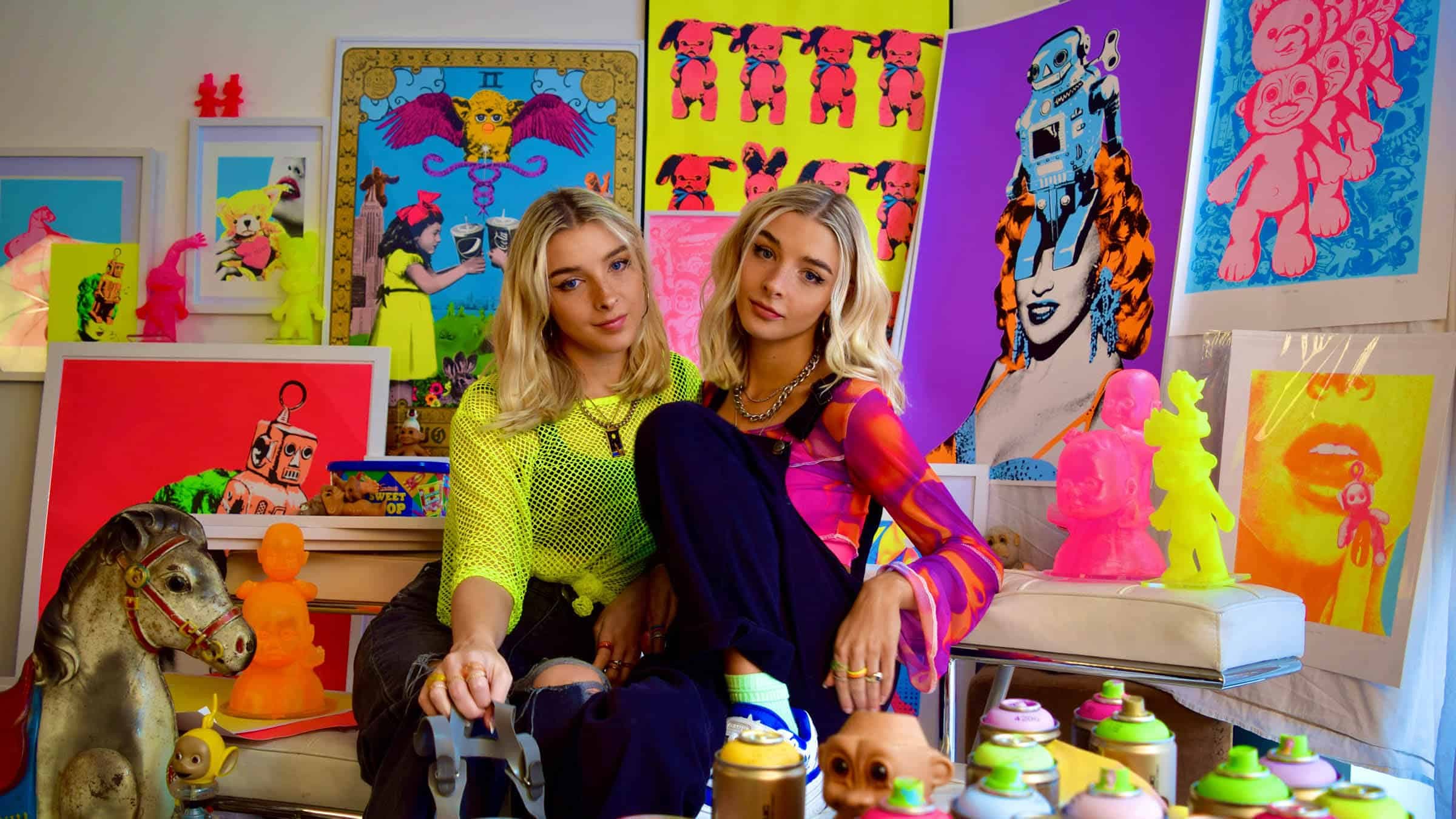
How did you hone your skills as an artist?
Phebe: We’ve just been always working together so we’ve kind of just learned how to work with each other and then it is just mainly through experimenting. We did study fine art together so that definitely helped us learn a lot of our skills. And then probably just listening and taking advice from our technical tutors when we’re doing our degree. And then just like any artist or anyone that we meet that can offer us advice, we definitely take that all in.
Abigail: We’re always collecting things, so we’ll be collecting pictures of things that we like that we see. We’ve got a big collection of those troll dolls. We have a massive shared folder of imagery that we collect in them. We’ll look for inspiration in those.
What influences your artwork?
Phebe: Childhood memories and sort of the toys and TV shows that we watched when we were younger and then just our own memories and our own toys that we’ve sort of collected over time. The main points of reference in just general art are street art or pop art. Just anything colourful.
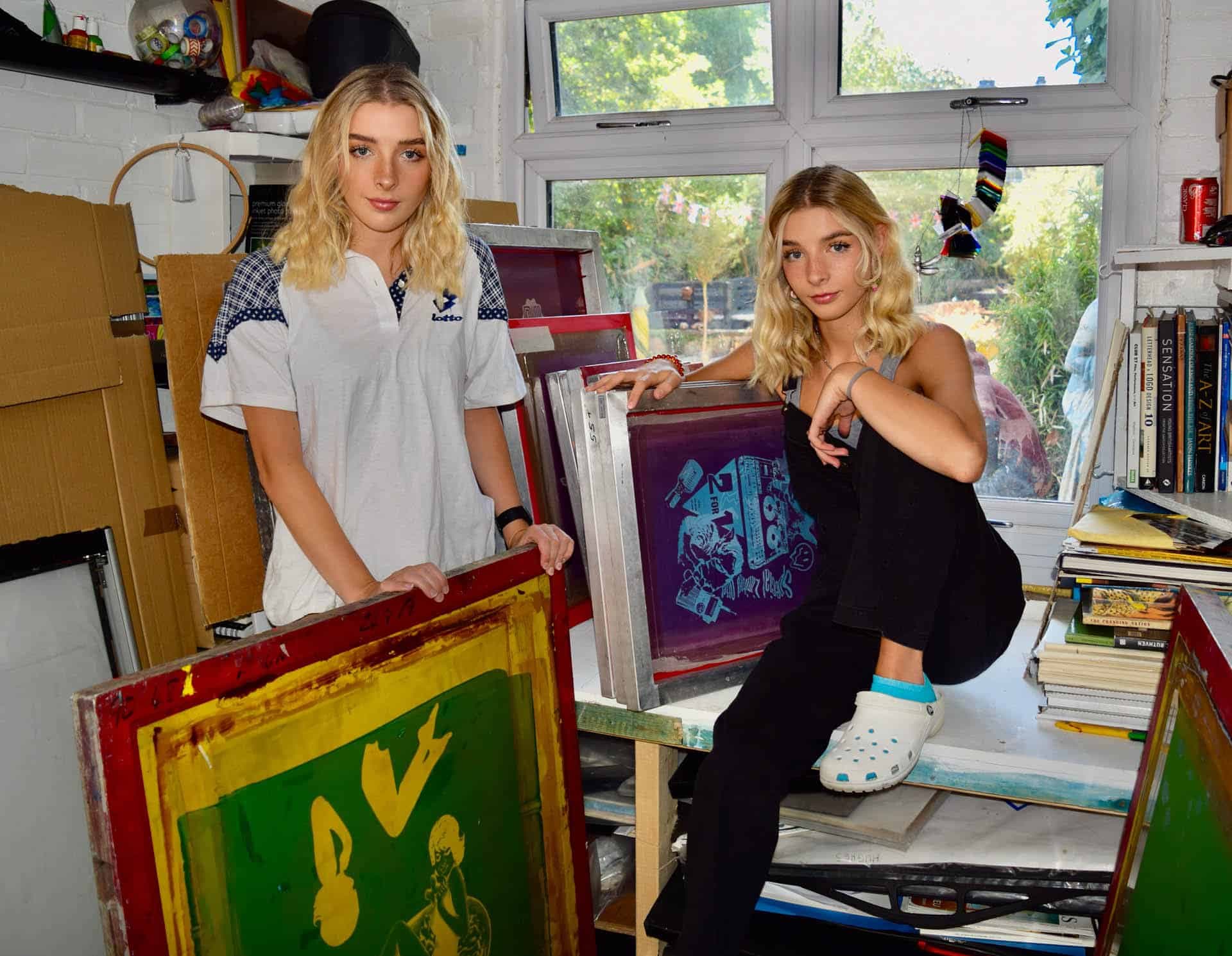
Why did you choose to work mostly with mixed media?
Phebe: We get, quite distracted when we’re working because the way that we make the artwork is quite a playful process. So we’ll kind of get inspired by something and then think, oh, we could try this in another media. Or some of our sculptures have inspired our prints or 2-D work and then it kind of goes back and forth between the two.
Abigail: I’d say we just kind of have an idea of what we want to make and then we don’t wanna limit the making process to one medium. So it’s having the idea first and then making it in any way that suits it best.
Do you have a favourite media that you like working with or is there a media that you would like to try?
Phebe: I’ve always wanted to try different types of materials for sculpture other than plastic. I’d really like to work in like metal or brass or something. Then also animation because our work is quite graphic. It would be really cool to learn some animation, but I don’t know. That’s probably like quite difficult to learn, but I would like to do it one day.
Abigail: I think going quite large scale with the work, is something I’ve always wanted to do. I think that’s something that’s kind of limited. We’ve been limited in size so far so if we had more money and more space, I’d like to do some really big large-scale work.
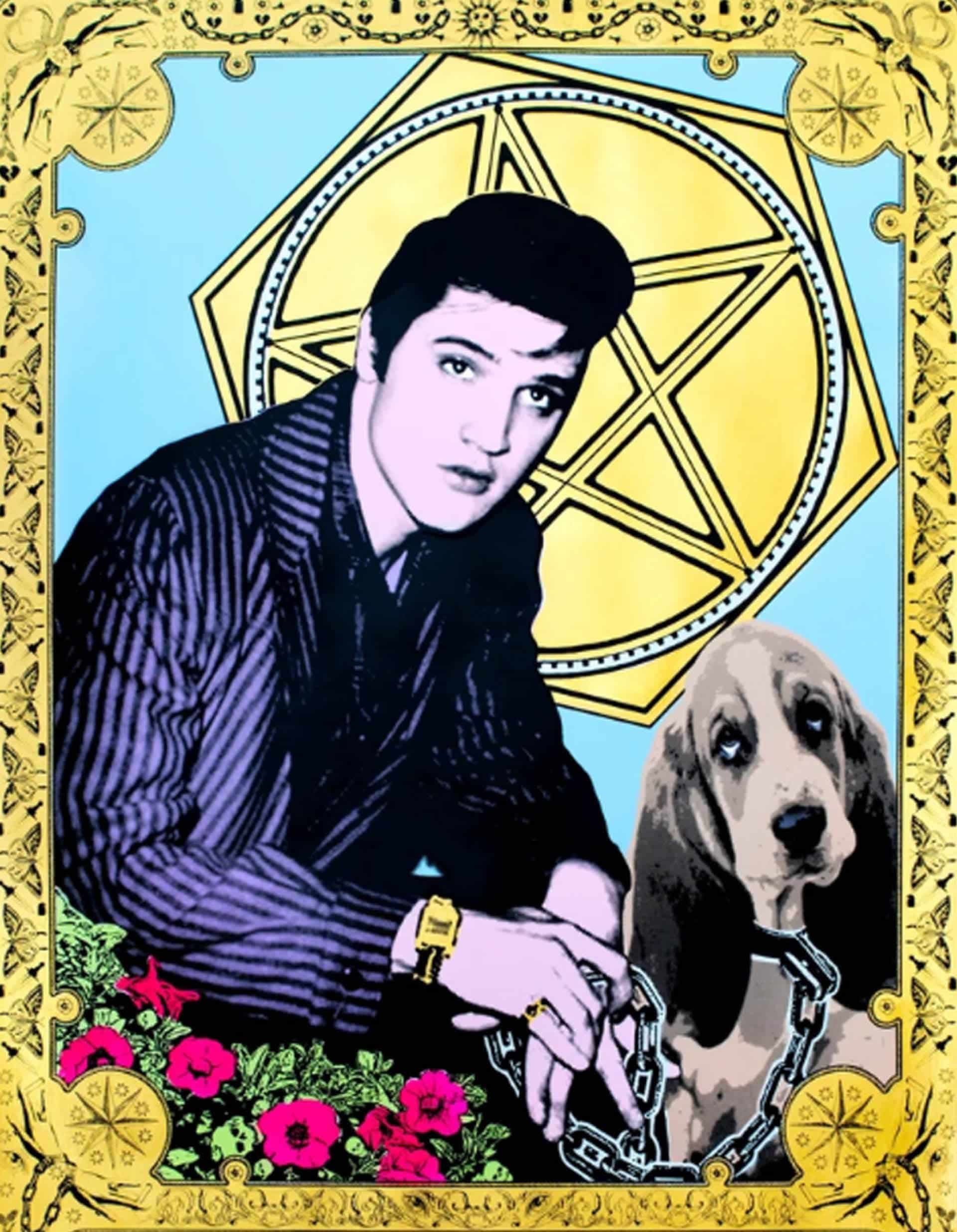
What is your creative process and why is the print process so important for you?
Phebe: We collect a load of images, toys, our own childhood drawings, and then also draw on our own shared memories from our childhood. We pick things that we want to use and then we’ll kind of discuss it together. And then if it’s a screen print or if it’s a 2-D work, we make a digital file first before the screen printing. So we’ll always be working on that together. We’ll discuss the colours and things that we want to use and try.
Abigail: I think the process is very playful and experimental, but it’s also a lot of hard work so we try and video the process and then we’ll make those reels for social media so that people can understand the process behind it. It’s kind of hard to explain as it’s quite methodical but also very chaotic the way that the prints and things are made. So it makes it easier for us to show videos I think.
Phebe: A lot of people don’t understand screen printing so we can help to explain it to them with our videos because when the prints come out they’ll look really like polished and clean, kind of like they’ve just been printed digitally. We always get asked how our collaborative practice works. Does one person make this and then the next person make that? It’s very much like equal parts throughout the whole process. When we’re printing we’ll both be pulling a screen at the same time.
What are your goals as an artist? What do you want people to take away from your work?
Phebe: Because our work mainly is interested in exploring nostalgia and memories, we always want to kind of evoke a sense of nostalgia from people and kind of trigger their memories and like make them feel something like connect to their childhood in some way. It’s really like nice if we can get kind of that response from people remembering the references or characters. But then we also kind of incorporate some darker imagery. Even though we want to connect to people, it’s still kind of autobiographical to our own childhood. So we’ll put in some like darker things to allude to that and to kind of make people question whether their memory of their childhood is actually like how they, how they recall it or like people looking back with raised tinted spectacles and make them kind of think, oh like that looks really nice and cute. Oh no wait, there’s like a knife and a spider in there that’s actually quite disturbing. We want to kind of shock them a bit at the same time. Yeah. But just have an overall bright, colourful, cute appearance to the work.
Abigail: It’s good to connect people across different age groups as well.
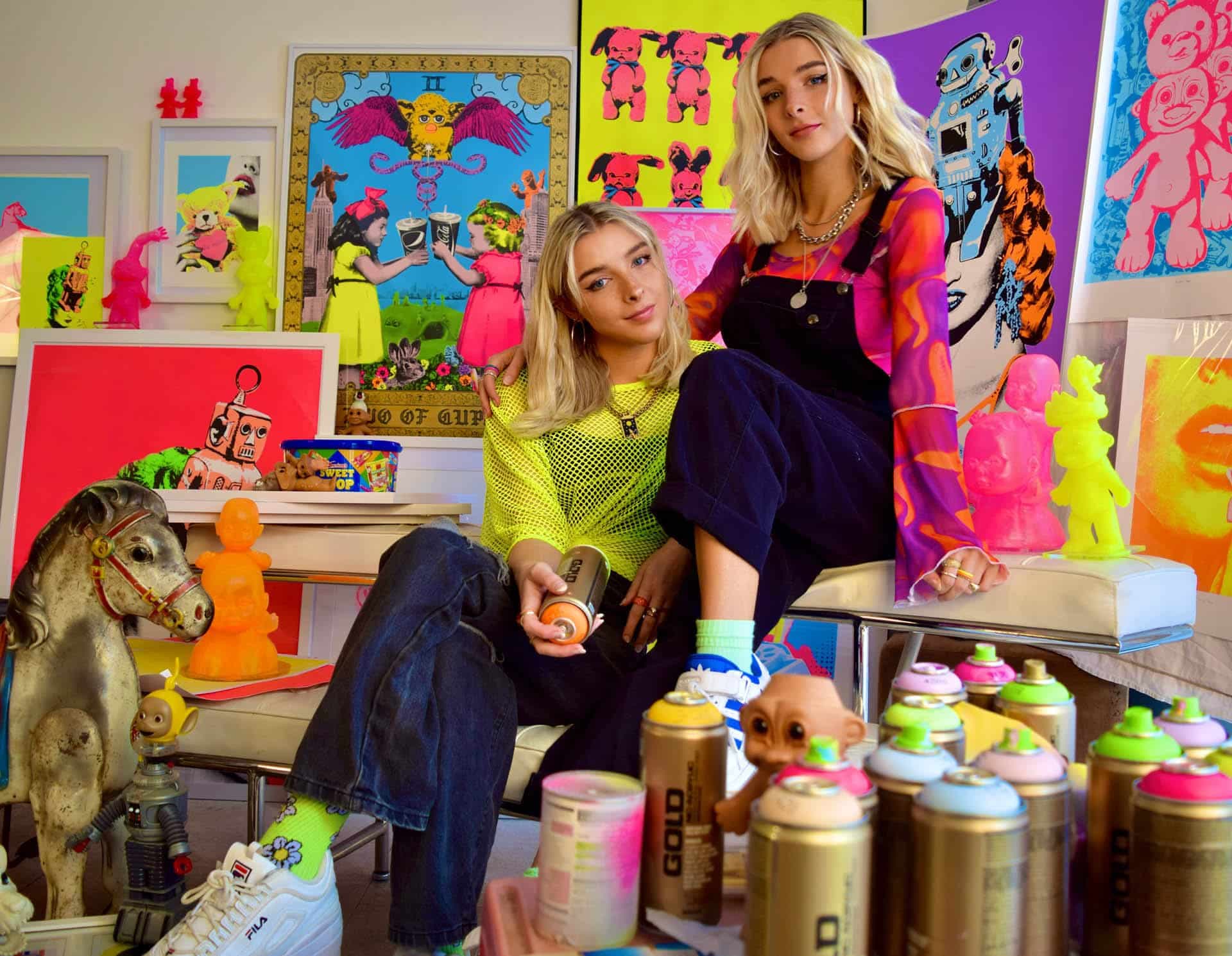
How does your work set you apart from other artists?
Phebe: I think it’s our connection as twins, in terms of its relation to what we explore in our practice of memory and childhood and imagination. It helps us that we’ve had like a shared upbringing.
Abigail: All of our memories are shared and we have different memories of the same thing but at the same time in our life. So we can kind of draw on that throughout the artwork. It’s quite like a unique thing to have the exact same shared memories. I guess the shared experiences growing up could be good or bad. We both remember that TV show and things like that. But I guess like it’s not even just us being twins that really that would set us apart. I think it’s a shared experience which is a bit unusual.
How long does it take you to finish a piece of work?
Phebe: It’s kind of hard to tell because there are so many stages to the processes of everything so I’m not really sure.
Abigail: It normally takes over a few weeks because we’ll have to agree and think of an idea and then argue about it for a while. Then eventually we’ll decide what we want to do and then they’ll be like the stage of making the digital file or planning it. Then if it’s involving screen printing there’s a lot of preparation for making screens and cleaning them and making different layers on Photoshop for your screen print stencils. So probably a couple of weeks from the starting point of collecting images and ideas to actually physically producing something.
Can you tell us about your latest works?
Phebe: So we just had a solo exhibition on Thursday. So we’ve done like some multimedia canvases for the first time for that and we’ve gone a lot bigger for those. So that’s kind of the first time we’ve done that scale and it was kind of experimental to work on to see if we could apply our old techniques onto canvas. It’s very colourful and graphic.
Abigail: We are working on some new stuff for the West Contemporary show. These works will be similar to our old stuff but it’s a lot more detailed. We’ve been including a lot more like smaller hidden imagery, and we are being more ambitious with how big we’ve gone and how detailed things are.
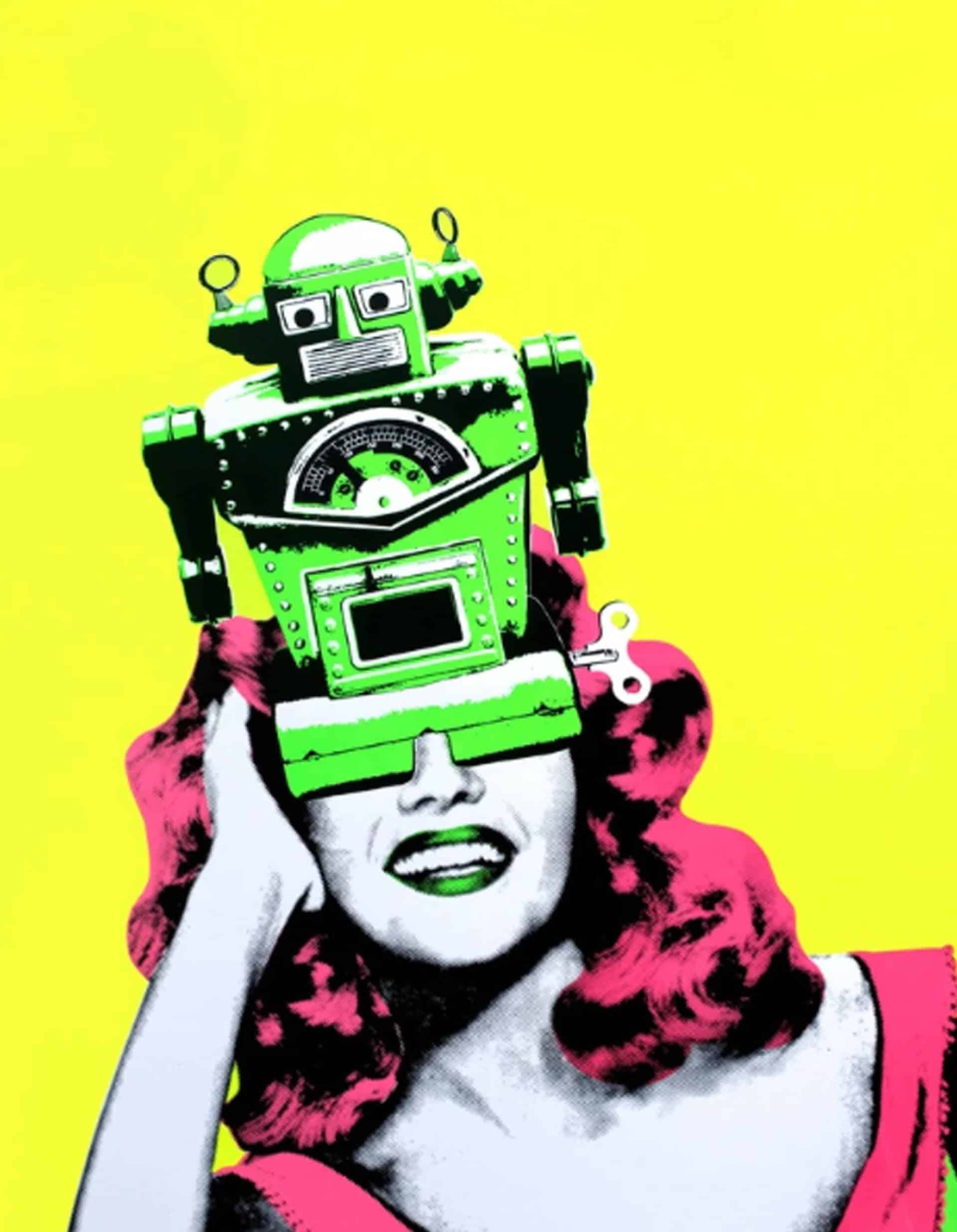
Of all your works, what is your favourite or most memorable and why?
Abigail: I feel like the tarot cards are always quite memorable because every time we’ve exhibited them, people have come in person to see them and said, ‘Oh I didn’t see this online,. I can’t see all this detail’ and that kind of thing.
Phebe: That’s always nice feedback to get from people because those tarot card artworks have multiple levels of meaning. There’s a kind of outward appearance of them being quite witty or just strange and surreal. But then they follow a traditional tarot card structure so if you understand the meaning of those cards then you can kind of gather more meaning from where we’ve changed energy to be. Like some kind of pop culture character or something like that. So there are lots of layers to look at.
Can you tell us about upcoming projects and plans?
Abigail: We’re making a couple of new pieces for the West Contemporary 20th anniversary show. I think those are going to be some more canvases because we really enjoyed working on those more ambitious pieces I think.
Phebe: They will be probably a bit larger than normal. We will also have the show in Jersey coming up at the end of the month. So we’ll be flying there. So that seems quite exciting.
The West Contemporary show XX will run from 28th March to 1st April 2023 at Gallery Different in London’s Fitzrovia.
